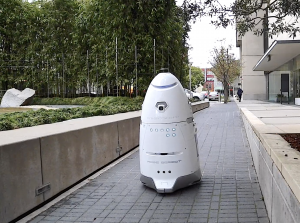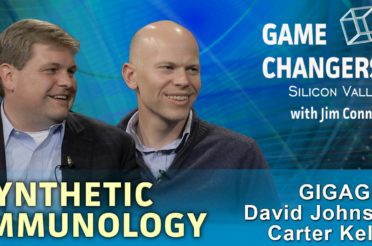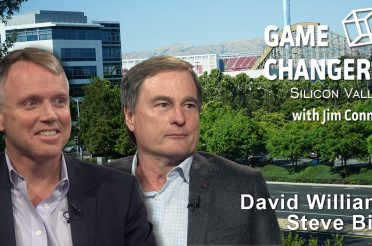Overview
One of the myths in the startup world is that creative insights come from outsiders, when in fact, many of the most successful and disruptive ideas have come from industry insiders. Many of the best entrepreneurs have leveraged their corporate experience, contacts, and resources to create new products and deploy a business strategy that was verified while they were corporate managers.
Despite having that extensive background in product development and innovation, the life of the founders in any startup is a never-ending roller coaster ride that can easily derail valid ideas, strategies and market needs.
William Santana Li, the CEO, and Founder of Knightscope joined us in a compelling conversation about his company and their autonomous robot technology which provides physical security, starting with government and corporate clients.
The range of technical development was unusual as the company developed approximately 75% of the components in a robot.
During our conversation, we discussed the early days when Bill was doing his first round of fundraising.
“This is what I was told. Hey Bill, you’re out of your mind! This will never work. You’ll need 15 million dollars to build the first prototype and it won’t work. It’s hardware and software, too complicated. You should pick one. And lastly, physical security is not an investment thesis, you need to go away”
The Knightscope story is personal, compelling and demonstrates just how challenging the process of developing a viable and sustainable business can be.
Key Concepts
Knightscope is in the early phase of utilizing mobile robots equipped with cameras and processing power to communicate situations to a central station. These robots are capable of recognizing potential threats in indoor or outdoor environments as well as maintaining real-time video and audio communications with potential intruders.
There are a number of drivers in the adoption of physical security robots as follows:
- Robots follow a customized routine, they are not subject to human resource policies or labor laws. They follow their programmed routines 24 hours per day, they maintain communication with their back office or central command.
- Enhanced mobility allows robots to maintain regular surveillance of both indoor and outdoor environments. Self driving-navigation technology allows robots to avoid people and objects that may cross their path.
- Robots are particularly well suited to providing security in remote areas. They can increase the effectiveness, efficiency, and abilities to safeguard remote areas in the security team.
- Physical security robots expand the effectiveness of the security plan. Robots are identical and do not have different personalities among them, a security professional only needs only how to establish a security plan and monitor the results.
- They are Cost Effective- A single robot is capable of working all day and night with the same focus, which is equivalent to the work done by human guards over three shifts.
Robots reduce the Risks for Human Security: The robots serve as the eyes and ears for the human guards, replacing them in difficult conditions and dangerous situations. They can function in situations that are a physical threat or industrial mishaps like chemical hazards, fire, etc. We would no longer have the first response to an unknown chemical carry the risk of exposing humans to an unknown risk.
In an era of low unemployment, there is a shortage of workers who are willing to endure the boredom and disruption involved in working night-time shifts and being exposed to the potential danger when a security violation does take place.
Contact Info
William Santana Li : www.knightscope.com
Jim Connor : jimrconnor@gmail.com
Website Link - : www.knightscope.com









